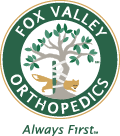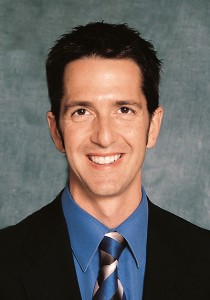Message from your doctor…
Whether you or one of your family members or friends is considering shoulder subacromial decompression, or are scheduled for surgery, I understand this can be a stressful time. And you may have forgotten some of the information we discussed during our last visit, or forgot to ask me a specific question about what to expect. This site is designed to help us stay connected, and to answer some of the most common questions patients ask me about shoulder subacromial decompression.
If you’re scheduled for surgery, please sign up to the right to receive pertinent post surgical and recovery information from me via text message or email. I want to make sure that both you and your family members have timely information at your fingertips during the days, weeks, and months following your surgery…so you can get back to enjoying the activities you love.
RecoverWell — Post Surgical Shoulder Subacromial Decompression
Pertinent Recovery Information
Shoulder Subacromial Decompression – Post-Operative Instructions
After Surgery
You will be receiving a post-operative phone call from the surgical staff within a few days after surgery to check on you and assist you with any concerns.
When To Call
Please call our office at (630) 584-1400 if you develop a fever greater than 101°F, increasing pain that is not responding to pain medication, redness around incisions or shoulder, increased swelling, persistent bleeding or drainage, or drainage other than clear fluid or blood. If it is after hours, the answering service will contact the physician assistant on call. It is normal to develop bruising to the operative arm. Some people have bruising across the chest all the way down to the hand. It can also be normal to develop swelling to the arm and hand. Gravity tends to pull fluid down the arm- your body will be able to reabsorb this fluid but it may take a few weeks. If the swelling becomes increasingly painful and more tender to the touch, please let our office know.
Pain
Your prescription for pain medication will be called into the pharmacy of your choice before you leave the surgery center. After the first day or two, as the pain lessens, you may decrease the frequency with which you take the medication. Remember, the medications are not necessarily meant to completely eliminate your pain, only to make it more bearable. Narcotic pain medications can cause constipation; you may wish to use an over-the-counter stool softener to help prevent this. Use ice or a cold therapy unit constantly for the first 48 hours, then as frequently as needed.
Dressing
You will have a soft dressing applied over your incisions. It is meant to absorb any leaking blood or fluid from the joint, and to protect from infection. Leakage immediately after surgery is normal and actually helps to drain some of the fluid that accumulates in the joint during surgery. The dressings may become moist or blood-stained; this is normal and usually not a cause for alarm.
Bathing
You may remove your dressing 48 hours after your surgery to take a shower. For showering, you may remove your entire sling and let your arm rest at your side. Under the surgical dressing, you may have steri-strips over your incisions (small white strips of tape). Please leave them in place until they fall off on their own or until they are removed at your first post-op appointment. You may let soap and water gently wash over your incisions, but do not scrub them. Pat them dry with a towel, then recover each of the incisions with a band-aid if desired. You may not soak your shoulder in a bathtub or go into a pool or hot tub until incisions are well healed (usually takes a few weeks).
Physical Therapy
Therapy typically starts within 1 week after surgery. Most patients go to physical therapy 2-3x/week for about 4-6 weeks.
Driving
You may drive once you have stopped the narcotic pain medication and can comfortably move your shoulder. You should not wear a sling while driving.
Sling
Because your surgery did not require a “repair,” the sling is only for comfort. It may be removed whenever you are comfortable. Most patients wear the sling for 3 days. It does not need to be worn while sleeping.
Return To Work
This depends on the nature of your job. If you have a desk job or can work from home, you may be able to do computer/phone work within 1 week of surgery. If you have a labor-intense job, or job that requires heavy lifting/repetitive use of your shoulder, you may need to be off work for at least 1 month. We can give you work restriction notes at each post operative visit if necessary
Other Tips
If you are having minimal pain and would like to switch to a milder medication, please take Tylenol/acetaminophen. Do not take Tylenol and Norco together (this would be too much acetaminophen). Do not exceed more than 4000mg of Tylenol/acetaminophen in a 24 hour period
Allow yourself to rest and recover during the weeks following surgery. Even if your shoulder is feeling better/less pain, don’t overdo it.
Plan ahead- if you need a refill on pain medication, our office requires 24-48 hours notice for your request to be processed. We cannot refill medications after hours or on weekends.
Rehabilitation is one of the most important aspect of shoulder surgery. Work hard in therapy to get your motion back!
Sport Specific Guidelines
We know you are eager to return to your sports and hobbies. We want to guide you safely through that process. Please use the following as a guide.
GOLF
1 week post op: Putting
1 month post op: If you have full and comfortable motion, you may take full swings with your irons and may progress to your driver as tolerated
WEIGHT LIFTING
Please follow the instructions of your physical therapist. Once you are nearing the end of physical therapy, your therapist can create a safe “return-to-lifting” program. Physical Therapists and Athletic Trainers can outline a specific plan for you. You may do lower body weight lifting and core exercises within 1-2 weeks after surgery.
SWIMMING
You may get in a pool at 2 weeks post-op, as long as your incisions are well healed. You should wait to swim until you have full and comfortable shoulder motion. For most patients, it will be 1 month post-op before swimming and up to 2-3 months until your stroke returns to normal.
RUNNING
You may use an elliptical machine or treadmill 3 days after your surgery provided your arm is holding a stationary hand rail. You may return to jogging 2-3 weeks after surgery as long as the shoulder is not hurting too much while you run. You may progress to your normal running routine 4-6 weeks after surgery.
OTHER SPORTS
Once you have full and comfortable motion and your physical therapist feels that your strength has progressed well, you may resume sports without restrictions. For most patients, it is 1 month after surgery before return to sports. If surgery is on your throwing arm it may take you 6-12 weeks to return to normal velocity and control of your throwing arm. Please ask us about returning sooner if you’d like.
Recovery Time Points
7-10 days post-op
You will have your first office visit with Cassie Mandala, Dr. Mehta’s Physician Assistant. You will review surgical pictures and discuss the procedures. Please feel free to ask any questions.
4-6 weeks post-op
You will have another office visit to check your range of motion and pain level. Most patients will have full shoulder motion at this time. You may resume any activity that you’d like. If you are happy with how the shoulder feels, you may follow-up as needed after this office visit. You are welcome to make future appointments.
Frequently Asked Questions
When can I drive?
You may drive once you have stopped the narcotic pain medication and can comfortably move your shoulder. You should not wear a sling while driving.
What about medications?
Take the narcotic medication regularly for at least the first few days after surgery. If you have having minimal pain and would like to switch to a milder medication, please take Tylenol/acetaminophen (extra strength or regular). Do not take Tylenol and norco together (this would be too much acetaminophen). Do not exceed more than 4000mg of Tylenol/acetaminophen in a 24 hour period. After your rotator cuff repair/labral repair, try to avoid taking NSAID anti-inflammatories such as Advil (Ibuprofen), Motrin, and Aleve (Naproxen)- there are studies that show these anti-inflammatories may slow healing of the body. If, for example, you get a headache and would like to take an occasional anti-inflammatory that is fine.
What motions should I avoid?
Do not lift shoulder out in front of body, out to your side, or reach behind your back until your physical therapist has progressed you to that point in therapy. Usually, it is 1 month to 6 weeks before you’ll be moving the shoulder on your own. It is ok to bend/straighten your elbow and use your hand to do things like typing (as long as your shoulder stays near your body). For example, you should put a computer keyboard in your lap instead of reaching out on a table for your keyboard). Initially in therapy, your therapist will do “passive motions,” which means your muscles won’t be doing the work. This protects your rotator cuff/labrum repair and allows your body to heal.
When can I drive?
Please do not attempt driving for about 4-6 weeks after surgery. This is for your safety, as well as other drivers- please do not attempt to drive with only one hand. Reasons for no driving post operatively: A quick, reactive motion of the shoulder while driving could damage your surgical repair. Secondly, you should not drive while taking any narcotic pain medications.
What about sleeping?
You may remove your sling to sleep even on the first night after surgery. Some people find it more comfortable to sleep upright (in a recliner chair) for a few days to weeks after surgery- this is optional.

